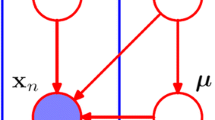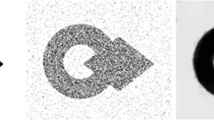Abstract
Expectation-Maximization (EM) algorithm is used in statistics for finding maximum likelihood estimates of parameters in probabilistic models, where the model depends on unobserved latent variables. The idea behind the EM algorithm is intuitive and natural, which makes it applicable to a variety of problems. However, the EM algorithm does not guarantee convergence to the global maximum when there are multiple local maxima. In this paper, a random swap EM (RSEM) algorithm is introduced and compared to other variants of the EM algorithms. The variants are then applied to color image segmentation. In addition, a cluster validity criterion is proposed for evaluating the segmentation results from the EM variants. The purpose of this paper is to compare the characteristics of the variants with split and merge strategies and stochastic ways and their performance in color image segmentation. The experimental results indicate that the introduced RSEM performs better with simpler implementation than the other variants.
Access this chapter
Tax calculation will be finalised at checkout
Purchases are for personal use only
Preview
Unable to display preview. Download preview PDF.
Similar content being viewed by others
References
Biernacki, G., Celeux, C., Govaert, G.: Choosing Starting Values for The EM Algorithm for Getting The Highest Likelihood in Multivariate Gaussian Mixture Models. Computational Statistics and Data Analysis 41, 561–575 (2003)
Karlis, B.D., Xekalaki, E.: Choosing Initial Values for The EM Algorithm for Finite Mixtures. Computational Statistics and Data Analysis 41, 577–590 (2003)
Udea, N., Nakano, R., Gharhamani, Z., Hinton, G.: SMEM Algorithm for Mixture Models. Neural Computation 12, 2109–2128 (2000)
Verbeek, J., Vlassis, N., Krose, B.: Efficient Greedy Learning of Gaussian Mixture Models. Neural Computation 15(12), 469–485 (2003)
Wei, G.G.G., Tanner, M.A.: A Monte Carlo Implementation of The EM Algorithm and The Poor Man’s Data Augmentation Algorithms. Journal of the American Statistical Association 85, 699–704 (1990)
Richardson, S., Green, P.J.: On Bayesian Analysis of Mixtures with An Unknown Number of Components. Journal of the Royal Statistical Society 59(4), 731–792 (2002)
Frayley, C., Raftery, A.: How Many Clusters? Which Clustering Method? Answers Via Model-based Cluster Analysis. Technical Report no. 329, Department of Statistics, University of Washington (1998)
Rissanen, J.: Stochastic complexity in statistical inquiry. World Scientific, Singapore (1989)
Mclachlan, G., Krishnan, T.: The EM Algorithm and Extensions. John Wiley & Sons (1996)
Kaukoranta, T., Fränti, P., Nevalainen, O.: Iterative splitand-merge algorithm for vector quantization codebook generation. Optical Engineering 37(10), 2726–2732 (1998)
Pelleg, D., Moore, A.: X-means: Extending K-means with efficient estimation of the number of clusters. In: Proceeding of the 17th Int. Conf. on Machine Learning, pp. 727–734 (2000)
Zhang, Z., Chen, C., Sun, J., Chan, K.: EM algorithms for Gaussian mixtures with split-and-merge operation. Pattern Recognition 36(9), 1973–1983 (2003)
Zhao, Q., Xu, M., Fränti, P.: Sum-of-squares based cluster validity index and significance analysis. In: Kolehmainen, M., Toivanen, P., Beliczynski, B. (eds.) ICANNGA 2009. LNCS, vol. 5495, pp. 313–322. Springer, Heidelberg (2009)
Minagawa, A., Tagawa, N., Tanaka, T.: SMEM algorithm is not fully compatible with maximum-likelihood framework. Neural Computation 14(6), 1261–1266 (2002)
Author information
Authors and Affiliations
Editor information
Editors and Affiliations
Rights and permissions
Copyright information
© 2014 Springer International Publishing Switzerland
About this paper
Cite this paper
Niu, M., Zhao, Q., Li, H. (2014). Comparison of EM-Based Algorithms and Image Segmentation Evaluation. In: Huang, DS., Jo, KH., Wang, L. (eds) Intelligent Computing Methodologies. ICIC 2014. Lecture Notes in Computer Science(), vol 8589. Springer, Cham. https://doi.org/10.1007/978-3-319-09339-0_8
Download citation
DOI: https://doi.org/10.1007/978-3-319-09339-0_8
Publisher Name: Springer, Cham
Print ISBN: 978-3-319-09338-3
Online ISBN: 978-3-319-09339-0
eBook Packages: Computer ScienceComputer Science (R0)




